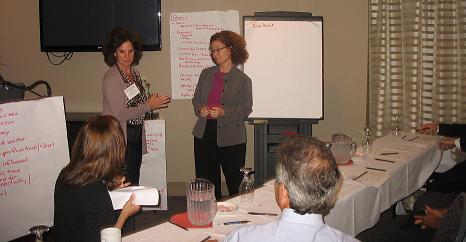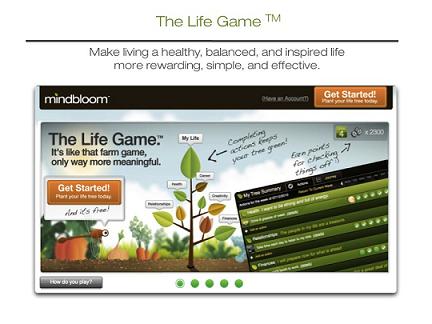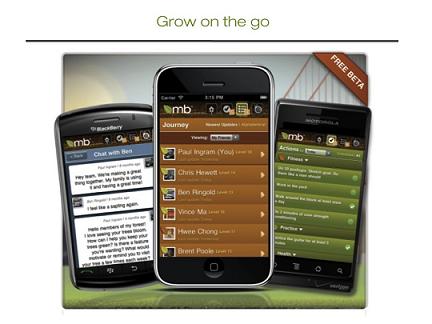Entries in Health and Wellness Incentives & Rewards (11)
Deja Vu. Data- Driven Retail Strategies, For Health Care This Time
 April 9, 2012
April 9, 2012 
Health care companies today are following in the footsteps of the retail-oriented, information based financial services industry.
What financial services companies have discovered is that in order to build their business, they must build a personal relationship with the consumer. They accomplished this by creating a consumer-centric database, monitoring shopping behavior through reporting and analytics, motivating activity through multi-channel communications and launching a loyalty program to reward consumer spending,
I was part of this customer-centric transformation as the Director of Database Marketing at GE Capital, which provides private label credit card programs for Disney and Apple, to name a few marquee brands. My cross- functional team started with the consumer in mind. We envisioned the experience that our retailer customers needed to deliver to their consumer card holders to differentiate themselves in the marketplace and capture a larger mind share and business share.
This is the same path that health care companies are marching down to get ready for new customers.
Consumers Are Coming! Health Care Companies Invest in Retail Strategies
In their report on “The Era of the Health care Consumer,” Accenture describes the shift in responsibility from the employers to the consumers and the resulting health care company investment changes from BTB to BTC. Accenture cites the opportunity to learn from the retail sector, especially the segmentation, profiling, loyalty and cross channel communications.
A few health care organizations are making the needed investments to move closer to the consumer in order to better understand their needs for information and tools to support health management. Aetna, for example, has partnered with Best Buy to sell wellness programs to consumers within the retail store and deliver their wellness coaching program online. In addition to store fronts, Florida Blue (previously BCBS Florida) has invested in their Guidewell online initiative to build a relationship with consumers beyond their member base.
Most health care companies, however, are still trying to figure out where to begin.
Barriers for Data-Driven Retail Health Care
There are several key barriers that Health care companies must overcome in order to effectively engage these retail consumers.
- Knowledge about the New Consumer: Health care companies have limited or no information about their newest customer that is either considering their health product/service or has just come onboard. As a result, the interaction can feel less satisfying. Using best practices from the financial industry, health care organizations can utilize segmentation and profiling to deliver a more personalized experience while gathering knowledge about the consumer through each touch.
- Knowledge about Consumers' Data Needs: During their recent research, IDC Health Insights learned that “despite large investments meant to extend the organizations’ consumer-centric model, health plans know little about how consumers want to consume information…”. Financial Services companies remain aligned with their customers by inviting them to participate in their own private branded online research community. The company captures consumer input and feedback on their product road map and new marketing initiatives.
- Knowledge about Proactive & Personalized Communications: Many health care organizations wait for consumers to come to their online marketing destinations including their website and social media and then wait for them to return. Although these companies maybe have tools in place to capture the contact information of interested consumers, they tend to send out the same information to everyone. Financial Services companies segment these target consumers and stream content of interest across their preferred communication channels to bring them back and engage.
- Knowledge about Developing a Personalized Incentive Program: One way that health care companies can differentiate themselves is with an incentive program that rewards a consumer for healthy lifestyle behaviors that fit her profile. One of the reasons that some credit card loyalty programs (e.g. American Express) are so effective is that they target personalized offers based on each consumer’s spending behavior profile.
Health care companies can learn from the leaders in the Financial Services industry about how to leverage technology to build a retail consumer relationship through ongoing personalized communications and programs which are aligned with the consumer’s ongoing data needs.
Regence Reaches Step 3 on their Consumer Engagement Path
 February 14, 2012
February 14, 2012  Regence Program Rewards Transformational Activities
Regence Program Rewards Transformational Activities
Regence started on a new path to consumer engagement back in 2005.
After seeing a recent presentation outlining their consumer engagement framework, I reached out to Torben Nielsen, VP, eBusiness Strategies and Services at Regence to learn more. Torben shared their past journey as well as their future direction with me.
Here are the 4 steps along their consumer engagement path. Regence is currently at Step 3 and has a conceptual view of their next step which will continue to evolve as the market landscape fills in around them.
Consumer Engagement Step 1: Know Me
Regence’s first step focused on the passive cardholder, giving them value as they logged in. The cardholder saw all of their claims, benefits and provider information. This was back in 2005. Prior to that “it was not a good experience” since the member only saw some of their claims information and the list of providers “did not even indicate whether each one was inside or outside their network”.
Consumer Engagement Step 2: Engage Me
Beginning in 2008, Regence decided that they needed to get to know their members in order to effectively engage them.
Instead of linking the member over to their health or wellness program vendor’s website, Regence decided to keep the member within their portal to capture their online behavior.
Around that time, Regence launched their Rewards Program which awarded points to members for “tranformational activities”. These activities were rewarded because they “informed, empowered and educated the consumer”, including looking up content around a health issue or participating in a wellness program. Regence decided not to reward members for “transactional activities” such as looking up a claim or searching for a provider. Regence really needed to keep the member on their portal to track their online behavior in order to reward them.
Next Regence started their email program, sending out relevant electronic communications to bring members back to the site. Although many health plans have an interest in emailing members, I hear all the time that they do not have their email addresses. Regence collects the member’s email address during their site registration process. “We can’t engage with out email. It would be a missed opportunity to get in front of the member”, Torben emphasizes.
In addition to generating additional portal traffic, health plan communications can also strengthen their member’s satisfaction scores, which is more important now than ever with the increased market competition.
Consumer Engagement Step 3: Connect Me
Over the past two to three years, Regence has been moving faster down the path with consumers.
“Connect Me” goes beyond the “member to health plan” relationship. According to Regence, this also includes strengthening the “member to member” bond through social community and the "member to their care team" bond through ACO efforts.
One important way for Regence to strengthen the “member to member” relationship is by getting consumers to contribute more content online through conversations, ratings/reviews and suggesting local events in their geography.
Another aspect of “Connect Me” addresses the cross communication channel experience since members are increasingly accessing and engaging through their mobile devices. “We’re connecting the data that we’re sitting on to provide a more personalized experience for our members”, explains Torben.
Consumers are engaging with Regence!
- 67,000+ patient reviews have been submitted by members, of which 90% are favorable (i.e. the member would recommend the physician/facility).
- 63,000+ posts in the Community section of myRegence.com, written by more than 6,000 unique content creators.
- 346,000+ have opted- in for member electronic communications (e.g. updates and alerts, account information, etc)
- 260,000+ subscribers signed up to receive the bi-weekly myRegence.com email newsletter
Consumer Engagement Step 4: Partner with Me
As they look down their Consumer Engagement path, Regence has determined where they want to be directionally. Regence wants to be relevant to the consumer’s every day life. Something consumers need to check as part of their daily routine. Their starting place to look for information to meet all of their health needs.
Although it is challenging to know exactly where the market is going, Regence will remain in touch with their users to help guide the way.
In fact, Regence has over 400 users that help advise them by providing ongoing feedback to potential directions. [Note: Innovative companies have consumer advisory boards as a best practice. Increasingly, these consumer advisory boards are managed in a private online area and the insight captured is used to guide product and marketing decisions.]
Regence is co-creating with this growing group of consumers to define and refine online capabilities. When Regence asked for feedback about “patient reviews”, members felt they needed to see more than the reviewer’s screen name. Users wanted “the ability to connect with their peers in order to get advice when selecting a provider”. In the latest patient review experience, the screen name is linked to the reviewer’s Community profile page, where to learn more about who they are, where they’re from, what they do for a living and members have an the opportunity to make a friend request.
Regence’s Results Realized
Due in large part to Regence’s consumer engagement strategies, myRegence.com experienced the following results in 2011 over 2010:
- 30% increase in the cumulative number of content creators (i.e. those who have left a patient review, posted in Community or both).
- 88% jump in the number of $25 gift card redemptions through the Rewards program
- 76% increase in the Consumer Engagement Index (CEI) which measures the user adoption of transformational features
- 26% open rate for targeted email campaigns, nearly 2x the industry benchmark of 14%
Regence has also noticed that their segmentation efforts for email have been effective in engaging consumers. For example, by sending a Patient Review email to previous reviewers, Regence realized a 38% open rate.
As Regence moves onto step 4 in Consumer Engagement, they are conceptualizing new ways to reach out to their members with relevant information from their plan, community and care team. And they will be innovating with and listening to their users throughout their journey.
I Wish for Mobile Health.....
 September 20, 2011
September 20, 2011 
My wish list grew as I researched how companies were using mobile to generate engagement in consumer- driven industries such as financial services, retail, travel and entertainment.
As I prepared for my Mobile Workshop at World Congress’s Product Innovation Conference, I identified, evaluated and selected mobile applications to inspire the workshop participants with their mobile health strategies. Each mobile application was chosen because it cleverly incorporated key engagement capabilities. Some mobile examples were designed to engage short term while others were intended to sustain engagement over the long run.
During the workshop, I presented more than a dozen selected examples which I organized into four groups based on how they engage consumers. Let me share one example from each group with you.
1) Life Management
Companies are creating mobile applications that help consumers get things done while on the go.
Example: Omnego launched a “Go Travel Wallet” application which enables consumers to load and access their travel documents including digital pictures of their passport and insurance documents. Consumers plan their travel by using all of their travel information such as rewards programs, credit cards and travel providers. They save money with the merchant coupons that are placed in their mobile wallet from social media, QR codes (scanned), emails and texts.
2) Information Access
By placing QR codes on their promotional materials, companies are grabbing the attention of their customers and offering them access to special content in return.
Example: For an upcoming movie, Fox Spotlight has splashed QR codes across their marketing materials distributed or placed (posters) around the community, all ready to be scanned to access exclusive content.
3) Social Community & Commerce
Businesses are realizing the power of using mobile to tap into the social networks of their customers.
Example: Amazon’s Back to School mobile application is targeted to the student segment. Students can buy and sell text books, access exclusive deals and share their “finds” with their social network.
4) Social Gaming
While playing a social game through a mobile application, consumers interact virtually with the company’s brand and are driven into the business’s physical locations.
Example: New Balance gets their customers moving in the community collecting “virtual batons” which can be redeemed in their stores for rewards, These batons appear on the consumer’s mobile phone by using GPS and maps. Consumers are motivated to visit the store quickly since the virtual baton can be stolen by others playing the game.
Mobile Insight & Guidance
During our workshop, my colleague Ahmed Albaiti, CEO of Medullan shared technology and consumer demand trends. After sharing a framework and guidelines for the interactive game, we split our workshop participants into teams.
Ahmed and I worked closely with our team as they defined their target users, thought through their needs and current resources to support them and then conceptualized a mobile application.
As I observed my group, I noticed that it was easy for them to suggest mobile capabilities from health applications already on the market but I had to continuously challenge them to incorporate innovative ideas from other consumer industries. My role was to help my team see how these innovative examples can be applied to healthcare to meet their business objectives.
It was exciting to watch the teams describe their wish for a mobile application designed for their target consumers.
Imagine a mobile workshop for your company, where all of your internal stakeholders are focusing on the users, identifying their own wish list and defining capabilities to truly engage these consumers.
 Health and Wellness Incentives & Rewards,
Health and Wellness Incentives & Rewards,  educating consumers about health and wellness,
educating consumers about health and wellness,  mobile engagement for teens,
mobile engagement for teens,  mobile health and wellness texting,
mobile health and wellness texting,  mobile location based services in
mobile location based services in  Consumer Segmentation Health,
Consumer Segmentation Health,  Data Driven Health Engagement,
Data Driven Health Engagement,  Decision Support eHealth,
Decision Support eHealth,  Mobile Engagement Health & Wellness,
Mobile Engagement Health & Wellness,  Personalization eHealth
Personalization eHealth New Directions in Employee Engagement: Competition, Coaching, Community & Compensation
 June 2, 2011
June 2, 2011 Our Panel at the 8th Annual Healthcare Unbound Conference 2011
 According to a recent Towers Watson survey, fewer employees have taken "action to improve their health” in 2010 than in 2008 (59% compared to 65%) which is a surprise given the rise in chronic conditions. Further findings are that “27% would not participate in wellness efforts without incentives”.
According to a recent Towers Watson survey, fewer employees have taken "action to improve their health” in 2010 than in 2008 (59% compared to 65%) which is a surprise given the rise in chronic conditions. Further findings are that “27% would not participate in wellness efforts without incentives”.
What are employers and health plans doing to successfully motivate consumers to participate in their wellness initiatives?
During this panel on employee engagement, you will learn:
· How virtual coaches are getting personal and gaining results
· Ways social graphs are being used to map and leverage influencers
· How reward strategies and behavioral economics are being utilized to produce behavior change
Moderator: Sherri Dorfman, MBA, CEO & Consumer eHealth Specialist, Stepping Stone Partners
Panelists:
- Bryce Williams, Director, Wellvolution, Blue Shield of California
- Pat Sukhum, Co-Founder & Director of Marketing, RedBrick Health
- Lisa McGill, VP, Worldwide Human Resources, Brocade Communications Systems (Self Insured Employer)
Aetna Grows Engagement With MindBloom’s Social Gaming, Networking and Rewards
 May 6, 2011
May 6, 2011 
"I do not want to disengage with my life to engage with my health…you want me, find a way to weave it into my life.“ ~ Quote from 2010 Health 2.0 Conference
As I viewed an in-depth demo of Aetna’s new social solution, I immediately noticed the unique approach they are taking with the Mindbloom platform.
My Tree
Mindbloom uses a tree metaphor to represent the different areas or branches of a person’s life. Let me share my thinking as I envision “My Tree”.
I am empowered to design my tree with branches that are important to me; health, relationships, lifestyle, leisure, finances, spirituality, creativity and career.
As I identify and complete an action of my choice, a new green leaf appears on the related branch. For my health, I may decide to add my own action to “complete my dance class this week”. When I overlook an area of my life, over time my leaves turn brown on that branch.
There are other trees from friends and family that I have invited to join my forest. I control what each of them sees. My closest friends and family view each leaf and can comment to acknowledge my accomplishments and support me when there are setbacks.
As I grow my tree, I strive for balance. I begin with a few branches and get them strong before adding others. In time, I envision having a vibrant tree.
When completing actions, I receive rewards that unlock new features including the option to select a new forest background or the ability to upload my own photos for inspiration.

Through my mobile phone, I can update my actions, journal my progress, view my friends' progress and send messages for encouragement. This lets me “grow on the go”. Beyond the existing mobile web capabilities, Mindbloom will be launching a much more robust native iPhone application in the fall timeframe.
“People will not track every day” explains Kyra Bobinet, Medical Director eHealth & Wellness at Aetna. “This tool is a repository where they will come in and out. We will give consumers reasons and stimuli to continue their journey for a healthy balance”.
Elements of Engagement
Although I have seen many health related games, this one is customized, comprehensive and compelling.
Here are five elements to drive consumer engagement:
1) Personal. My tree looks different than yours. It has specific branches and leaves that are important to me.
2) Holistic. I extend my tree with branches from different aspects of my life beyond health. In fact, the growth of one branch influences another. When my health branch is under stress, my relationship branch is impacted.
3) Social. My forest has trees representing my friends and family. We are all there to support and strengthen each other. This forest is changing all the time and I am drawn back to take a look.
4) Rewarding. As I reach new milestones or succeed in maintaining a healthy balance, I am rewarded in many ways. In addition to feeling better, I receive points as well as recognition through my private forest and public social communities (e.g. Facebook). And I am also rewarded seeing my “Tree Summary” displaying my accomplishments.
5) Fun. Like any interactive game that keeps my attention, this one is full of surprises. My points take me to new levels which reveal new opportunities for growth.
Engagement By Design
Before designing this solution, Aetna conducted extensive research with consumers. They learned that consumers want Aetna to make it “more fun”, “easier” and “rewarding”.
I am most interested in seeing how engagement grows and which segments of consumers are motivated to develop and nurture a balanced tree of life.
Disclosure: I worked with the Aetna team on concepts before the Mindbloom partnership.


